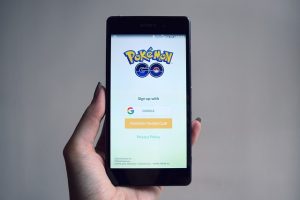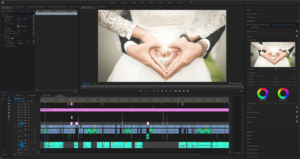Huawei P30 Pro Review Video Features and Other Great Features.

That history was created in April 2016 when Huawei announced its collaboration with Leica. The result of this collaboration is the P9 smartphone which is equipped with a dual rear camera. One camera is equipped with an RGB color sensor and the other uses a monochrome sensor, aka black and white. Utilizing the two rear cameras, the P9 can provide quality bokeh effects and sharper contrast.
After 3 years, Huawei is still strengthening their flagship smartphone by collaborating with Leica. This time, the newest winner is the P30 Pro, the successor of the P20 Pro. Unlike the predecessor which presents three rear cameras, the P30 Pro comes with four rear cameras (Huawei calls it a QCS).
Before I thoroughly explore the performance of the camera, I want to discuss the P30 Pro design first. The unit in my hand has a Breathing Crystal color that displays colors like a mixture of purple, blue, green and white. These four colors become one with a very smooth gradation system, so that it looks quite stunning.
My mind immediately remembered the Galaxy S9 when I saw the face and design of the Huawei P.30. This is because the P30 Pro screen is curved. However, the visual difference is the presence of a notch in the upper part of the screen that is useful as a place to stay for the front camera. When holding it, it’s like my feeling like holding a Galaxy S9. This is because the rear side is also equipped with curved touches both on the left and right. Therefore, I feel the left and right parts slightly shrink.
Unfortunately, the P30 Pro body is rather slippery and easily exposed to fingerprint stains. The screen measures 6.47 OLED technology with a resolution of 2,340×1,080 pixels with an aspect ratio of 19.5: 9. This allows you to watch movies on Netflix or something like the 21 : 9 cinematis format with minimal black bar lines above and below. I make sure this smartphone Best phone for watching movies.
In terms of physical buttons, Huawei only provides volume and power buttons. These buttons are located on the right side. On the top side, you will see a small shaped roundabout that functions as an infrared emitter. Infrared can be used as a television remote control Smart Remote application.
The sim card slot is on the bottom side, with a USB Type C port. There is no 3.5mm port jack, so I cannot connect my favorite earphones. Huawei’s internal memory can be upgraded using a SIM card slot 2. However, this smartphone uses (NM) exclusive from Huawei rather than microSD.
I have explained above that the P30 Pro notch is the front camera. Thus, the size of the notch is quite small. If the notch is only for the front camera, then where is the speaker that is useful for conducting telephone conversations?
The speaker (earpiece) on this smartphone uses an exclusive Acoustic Display technology from Huawei that allows sound to come out of the screen. Thus, there is no need for physical speakers.
Huawei provides P30 Pro with Fingerprint ID and Face Recognition security, aka fingerprint detection and face detection. The P30 Pro fingerprint sensor is located behind the screen. This is not something that is ‘wow’, considering that the smartphone is included in the title of flagship. The performance of the P30 Pro fingerprint sensor is indeed not too special when compared to the physical fingerprint sensor.
But, as long as I use it, the fingerprint sensor on the screen is quite reliable. Even so, I failed to open the device several times when my finger was wet. The recognition of his face can also be said to be good because it is very quick to detect faces in almost all situations. The P30 Pro occasionally can’t detect it while it’s in the room and my face is back to the light.
Already mentioned earlier, the P30 Pro rear camera configuration is equipped with four cameras. Each of the four cameras includes a main camera with a sensor with a resolution of 40MP f / 1.6 27 mm O I S, an ultra wide 16mm camera with an aperture of f / 2.2, an 8 MP periscope camera f / 3.4 telephoto 125 mm, and a ToF camera.
As the name implies, a periscope camera system borrows from a periscope mechanism that is generally in submarines. Because the P30 Pro body has a thickness of only 8.41mm, it is very unlikely to present a 5x optical zoom. Therefore, Huawei worked around this by placing a 90 degree camera component away from the cover.
Furthermore, the zoom lens component and CMOS sensor are in a vertical position. Thus, it allows a considerable distance between the sensors of the lens, without sacrificing the slackness of the smartphone.
The ToF camera is smaller than the other three P30 Pro rear cameras. It is located under the LED flash. This camera works to capture infrared light emitted from the emitter near the flash light after bouncing off the subject. Thus, the device is able to calculate how close the subject is to the camera. This sensor functions to provide more realistic bokeh results compared to most smartphone cameras.
Based on the metadata information from the photos taken, the actual focal length for the 40 MP main camera is 5.56mm, the 20 MP ultra wide camera has a focal length of 2.35mm, and the periscope telephoto with focal length of 14.46mm.
There are various modes presented by P30 Pro, namely “Aperture”, Night, Portrait, Photo, Video, Pro, and More. In the ‘More’ option, you will see a number of features that can be selected to enhance creativity, such as Slow motion, Panorama, Monochrome, AR Lens, HDR, Time-lapse, and so on. The mode can be selected by pressing it at the bottom.
It is predictable that the Aperture mode offers shooting with various numbers of lens openings (aperture). Press the icon similar to the aperture and then you can change the aperture size from f / 0.95 to f / 16. Keep in mind that the aperture is done in a digital simulation, not a physical mechanism like a mirrorless camera or DSLR.
Night Mode allows you to shoot in dim light conditions. You can set ISO and shutter speed in this mode. The ISO range starts from 100 to 1600. Do not miss the automatic ISO if you want a camera that determines which ISO is the most suitable. The shutter speed offered is 1/4 second to 32 seconds. Like ISO, shutter speed is also made automatic.
The most commonly used mode is Photo mode. You can use it to take pictures in any scenario and submit the appropriate settings to the camera. There is also an AI Master feature that allows it to detect the subject being photographed and adjust its color.
For example, if you take a photo in the afternoon and the position of the sun wants to set, then the AI Master will change the shooting mode to Sunset. Some of the categories offered are Close-up, Text, Greenery, Portrait, Waterfall, and so on.
Machine learning on the AI P30 Pro Master system is able to detect subjects quite accurately. For example, the camera immediately recognizes the subject when I shoot flowers, and then immediately changes the color accordingly. When I hold the camera closer to the subject (flower), the AI will detect it as a Super Macro.
The latest Master AI is also seen when I do macro photography, but this time the power takes a picture with writing. Instead of switching to Macro or Super Macro shooting mode, the P30 Pro’s AI technology system changes it to Docs mode so that the writing in the file looks more sharp. Thus, the AI Master has a fairly accurate and fast performance to help change the color tone so that photos look more attractive according to the subject being photographed.






